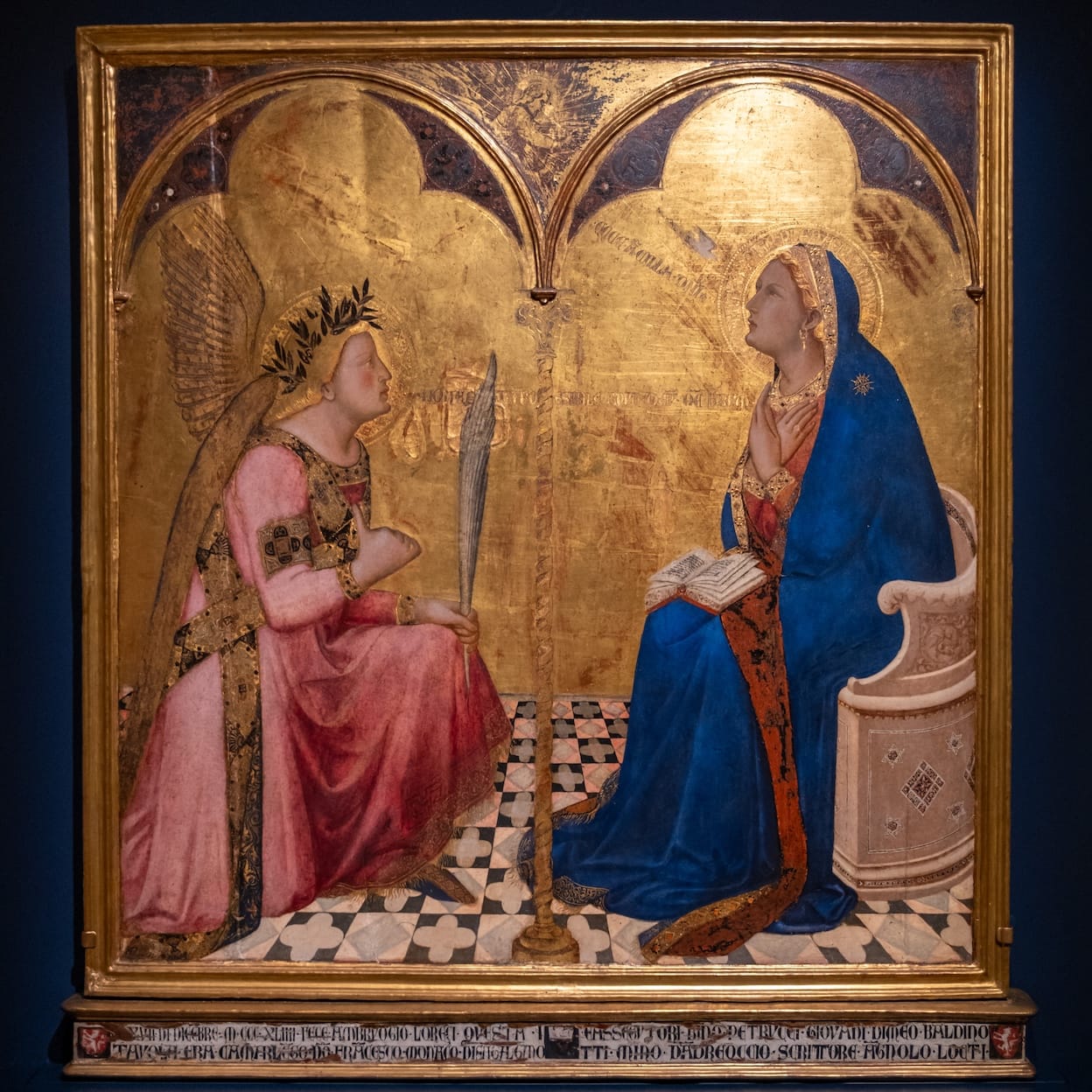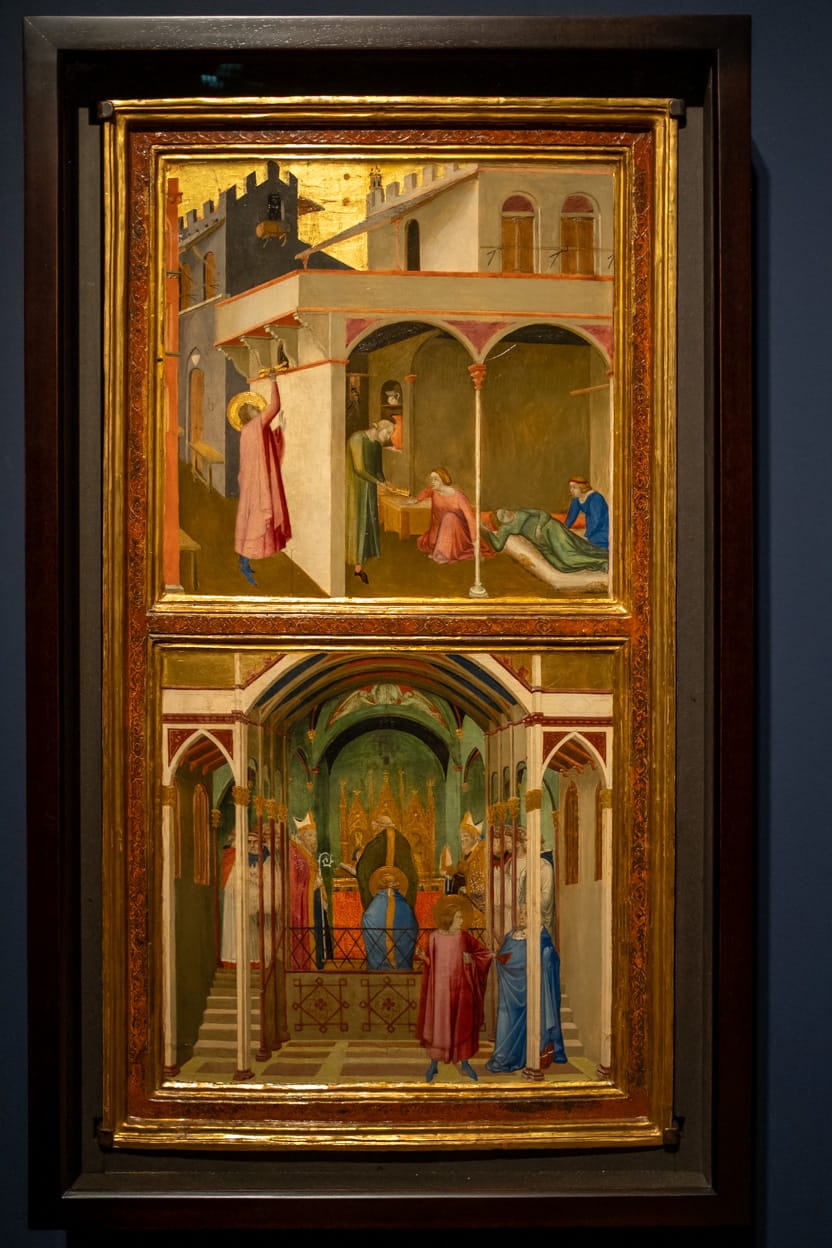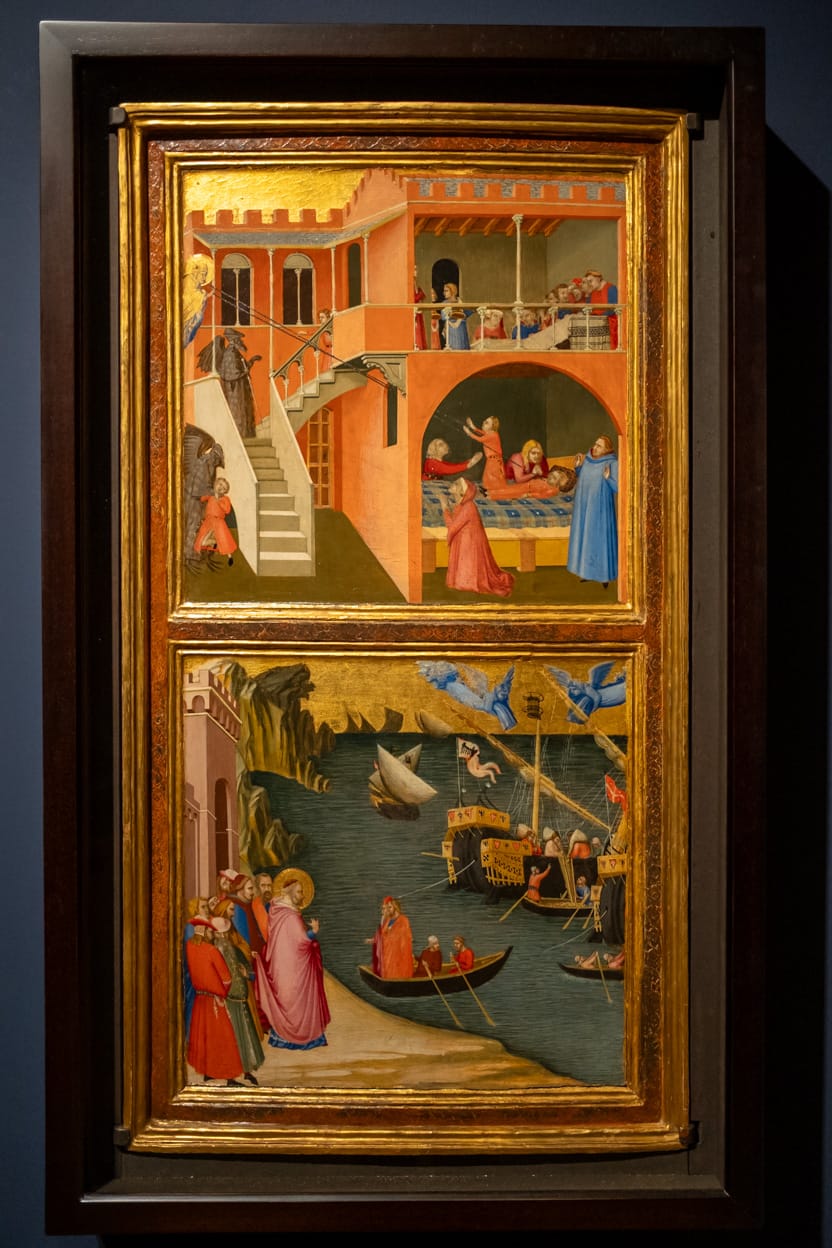I had been looking forward to the National Gallery’s exhibition “Siena: The Rise of Painting, 1300-1350” after reading rave reviews when it was on show at New York’s Metropolitan Museum of Art.
“Siena: The Rise of Painting” is a rare celebration of early Italian religious art, offering both visual beauty and profound scholarly achievement. At a time when many museums shy away from displaying overtly Christian art, this exhibition embraces its devotional nature. It reminds visitors that such works were intended to engage viewers in a reciprocal, spiritual relationship, an experience the National Gallery enhances through a powerful, theatrical display of gilded altarpieces against dark backgrounds. Here, Siena steps out from Florence’s long shadow, reclaiming its place in the history of Western art.
Siena’s Gothic style, often dismissed as primitive, reveals itself instead as a language rich in complexity and emotion. I am the first to admit that in order to discover this richness you have to look closely and carefully, something for which many visitors, myself included, often don’t take the time.
The exhibition opens by contrasting three images of the Virgin and Child, juxtaposing a severe Byzantine Virgin and a delicate French ivory carving with a painting by Duccio di Buoninsegna. Duccio, blending influences from Constantinople, Paris, and Italy, emerges as a major innovator, leading Siena’s artistic golden age until the Black Death’s devastation. His emotional and daring works trace the birth of a uniquely Sienese sensibility.
Central to Duccio’s legacy is the Maestà, a monumental altarpiece once installed in the Siena Cathedral, which has been partially reassembled for the exhibition. The restored panels, alive with vivid narrative scenes from Christ’s life, showcase a fusion of Byzantine glitter and early Renaissance naturalism. Duccio’s innovations inspired contemporaries like Pietro and Ambrogio Lorenzetti and Simone Martini, who expanded narrative painting’s emotional and spatial sophistication, each adding their distinctive voice to Siena’s flourishing visual language.

Among these, Simone Martini stands out with his eye for visual drama, as seen in works like his Annunciation and the Orsini Polyptych, where Mary Magdalene’s grief is almost physically tangible. Yet Martini also reveals a sly humor in paintings like Christ Discovered in the Temple, humanizing biblical scenes with relatable emotion and wit. His nuanced storytelling, moving between sorrow and comedy, shows the remarkable breadth of Sienese artistry at the time.


Ambrogio Lorenzetti: Saint Nicholas Gives Dowries to Three Maidens (top left), The Choice and Consecration of Saint Nicholas as Bishop of Myra (bottom left), Saint Nicholas Resusciates a Boy Strangled by the Devil (top right), Saint Nicholas and the Grain Ships (bottom right) (1332-34). I love these comics avant la lettre.
My favourite work in the exhibition is a diptych by Ambrogio Lorenzetti. One of panels shows Saint Nicholas intervening in the tale of a child strangled by a clawed devil disguised as a pilgrim. The boy breathes, chokes, lies dead and revives all in one scene as Ambrogio experiments with depicting a narrative arc in a single panel. In this painting Ambrogio rivals many contemporary comic book artists in inventiveness.
Through Duccio’s compassionate details, Simone’s theatrical flair, and the Lorenzettis' innovations, “Siena: The Rise of Painting” reveals a brief, golden period when art pulsed with human emotion, divine mystery, and imaginative vigor. Tragically, this flowering was cut short by the Black Death, which decimated Siena’s population and stilled its vibrant streets. What remains, gathered miraculously in this exhibition, is a testament to an era when painting first began to truly capture the fullness of life.
Siena: The Rise of Painting, 1300–1350 is at the National Gallery, London until 22 June 2025.
Links
On a road trip through Tuscany and Umbria I also made a brief stop in Siena to visit the cathedral and wander the streets and alleys of the old city centre.